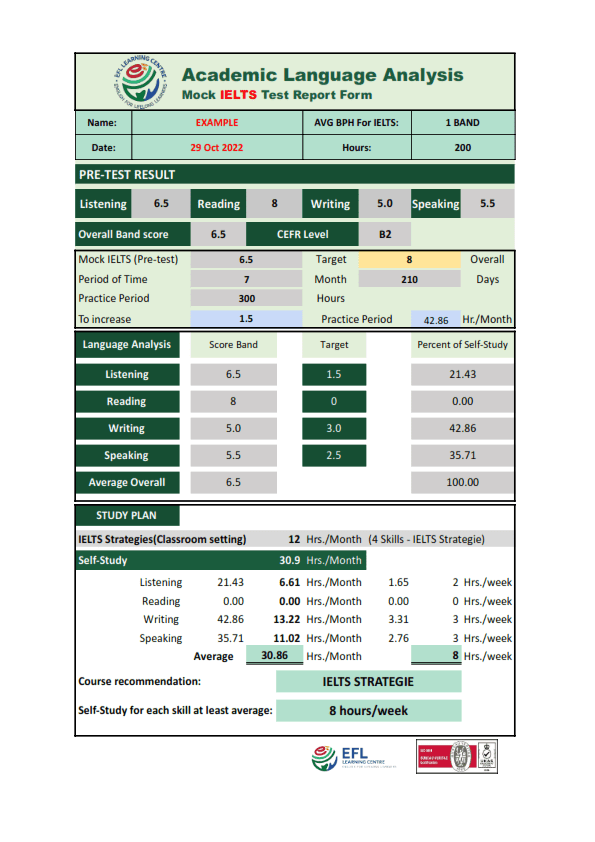MOCK IELTS
WHY DO A MOCK IELTS?
When a student completes the mock IELTS test, the current skills level of each student is determined and a training program is then prepared according to his/her own needs. This allows the student to receive the preparation required before the actual IELTS test is taken.
Speaking
The test is administered by a mock IELTS examiner who will ask questions from all three sections of a speaking test and will evaluate the responses of the student according to the criteria set in the speaking band descriptors (Grammar, Pronunciation, Vocabulary and Coherence)


Writing
The student is to complete a writing task 1 report and an essay within the hour time limit. The mock IELTS examiner will mark the writing responses and provide a score according to the criteria set in the writing band descriptors (Task response, Vocabulary, Coherence and Grammar)
Listening
The student will listen to a full recording of an IELTS practice test and will be provided with a band score according to the number of correct answers given.


Reading
The student is to complete the reading exercises by reading all 3 passages and answering the questions within the hour time limit. The band score is calculated according to the number of correct answers given.
LANGUAGE ANALYSIS IS DONE

The gap between the mock IELTS score and the target average band score is calculated for each of the four skills. The number of hours required to achieve the target are calculated according to the difference in the current score and the target.
In order to achieve 1 band higher score overall, a total of 200 study hours are recommended.
For example:
The student achieved a band 4.5 overall score and the overall target to achieve is band 7:
| Mock IELTS | Difference to target | Hours | |
|---|---|---|---|
| Reading | 4.5 | 2.5 | 138.89 |
| Writing | 5.0 | 2.0 | 111.11 |
| Listening | 5.5 | 1.5 | 83.33 |
| Speaking | 4 | 3 | 166.67 |
| Overall average | 4.5 | 2.5 | 500 |
A total of 500 hours is needed to achieve an additional 2.5 band overall score.
Some of these hours will be spent in the classroom or online with the teacher but most of the hours will be spent by the student doing homework assignments and additional practices at home.
One IELTS course is usually 12 hours of teacher training and the progress of the student is reviewed after each course to determine how many additional teacher training hours are required in order to reach the target band score.
TRAINING PROGRAMME IS DEVELOPED
An experienced teacher is assigned to the student and a training programme is developed according to the specific individual needs of the student. The teacher considers the current level of the student for each of the four skills and then develops the IELTS preparation course based on these particular needs.
STUDENT DOES THE IELTS PREPARATION COURSE
The student is required to attend lessons (in class on site or online) and to complete all homework assignments.
The IELTS preparation lessons are designed to teach the students the strategies in order for them to further develop the four skills. Practical examples are done together with the student and they then practice and produce each of the exercises, with continuous support and feedback from the teacher.
An overview of the course content is as follows:

